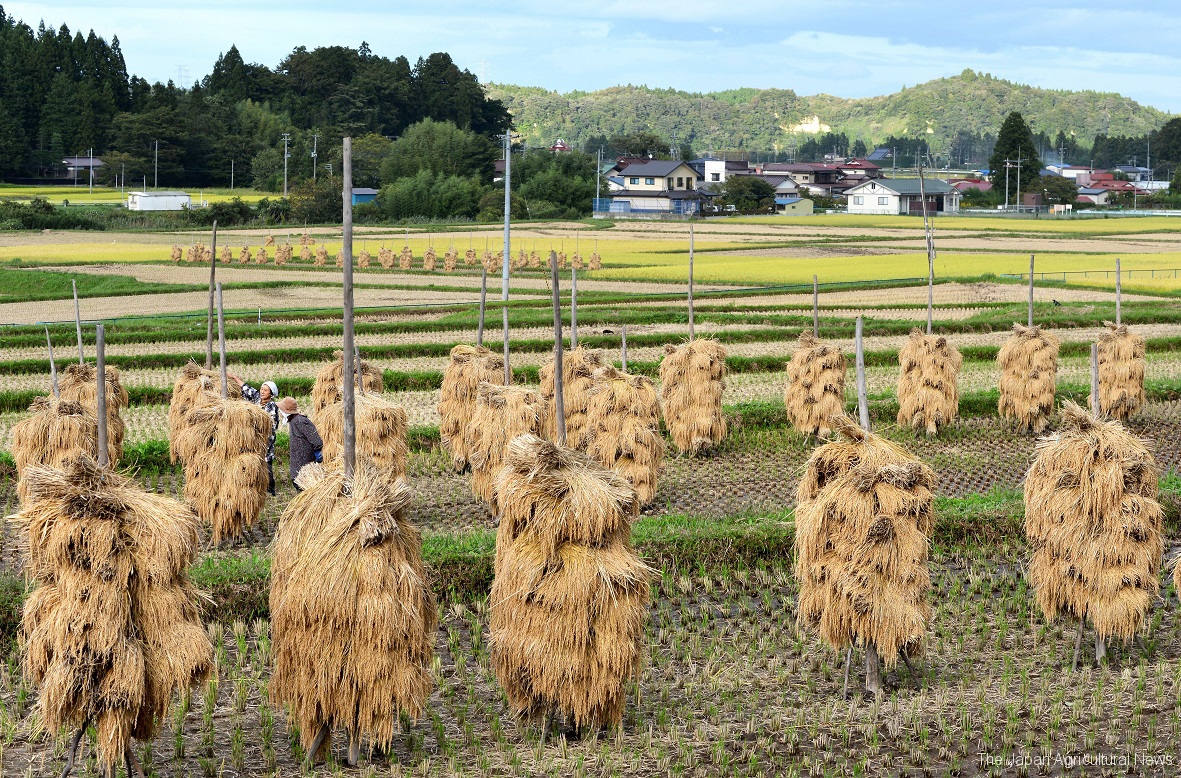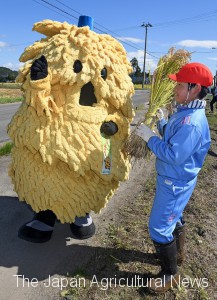
Many Honnyo stand in the rice field. You can see them only in autumn when rice farmers dry rice in the sun. (in Kurihara City, Miyagi Prefecture)

Nejiri Honnyo is a local mascot of Kurihara City designed to promote the attractions and rice produced in the city. The mascot with a soft and fluffy body is popular among children.
It’s believed that the name “Honnyo” has come from “honio,” the name of the method of stacking freshly-harvested rice plants, or from “honioh” from the shape that looks like a temple guardian. To make Honnyo, you assemble four bunches of the rice plants in the shape of a cross and hung them around a cedar pole of two to three meters long which stands in the rice fields. Usually, you can place around 30 of them per 10 are.
Farmers in Nagasaki region do it a little differently, by making triangles with the rice plants and assemble them on the pole in an angle so that the tips of the plants or the rice grains are exposed to the sun more effectively. Both were common methods for drying rice before things got mechanized.
However, this beautiful tradition is fading away. “Only a few farmers make Nejiri Honnyo, for example, for promotional events,” according to a person from the rice producer support department of a local agricultural cooperative, JA Kurikko.
One of the few farmers is a 59-year-old rice grower Shuichi Oyama, who has kept the tradition for over 40 years. This year, he made 20 Honnyo in his 5.6-are paddy field with neighbors. “We used to help each other in making Honnyo. Here, we still help each other and enjoy the earthy aroma. Without them, there is no point to keep living here,” he said in explaining why he sticks to the tradition.
There is no historical evidence to tell when this old method began, but Ichihasama has a long-established history in growing rice as a producer that served rice to the Date clan who ruled this region in the Edo period. The community mascot Nejiri Honnyo debuted in 2014 as a local character to promote rice from Kurihara City and stimulate economic development. The costumed figure with fringes shows up fairly often at events in the city and at other locations to promote the attractions of Kurihara.


